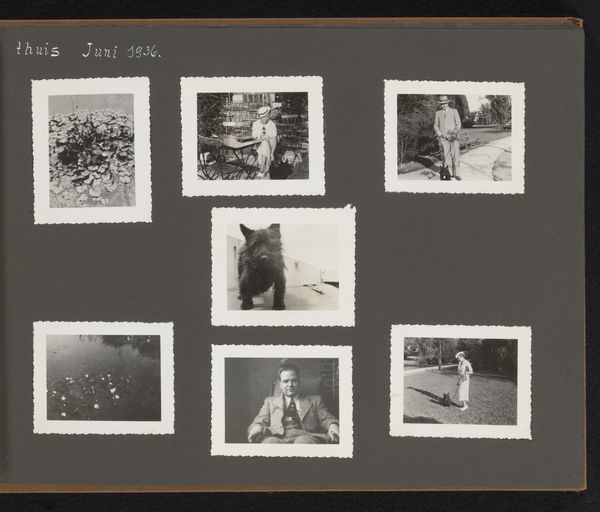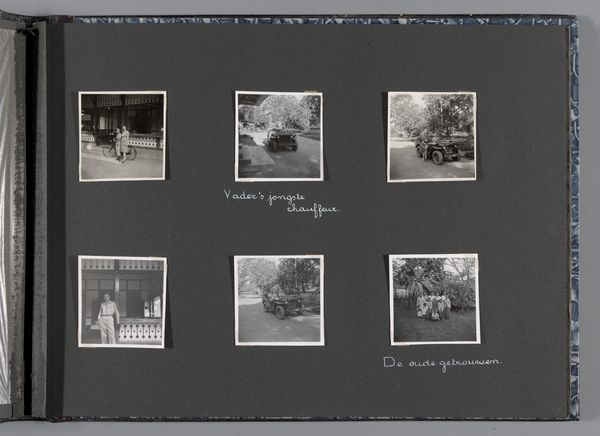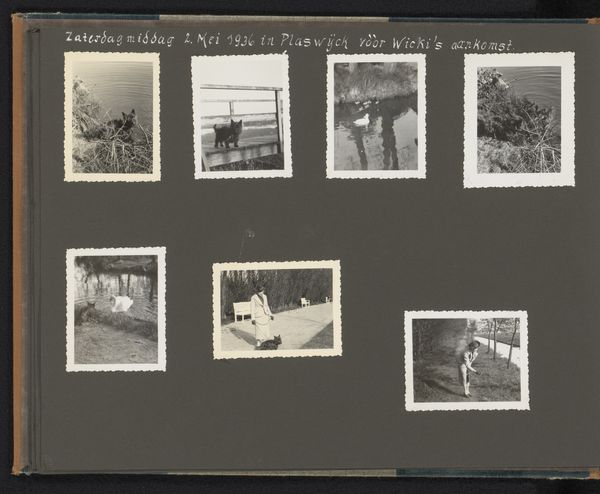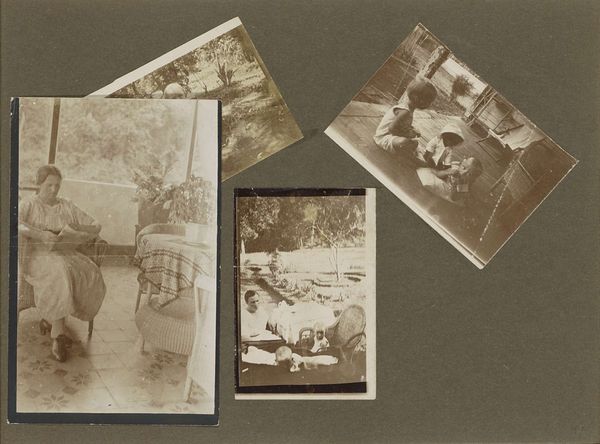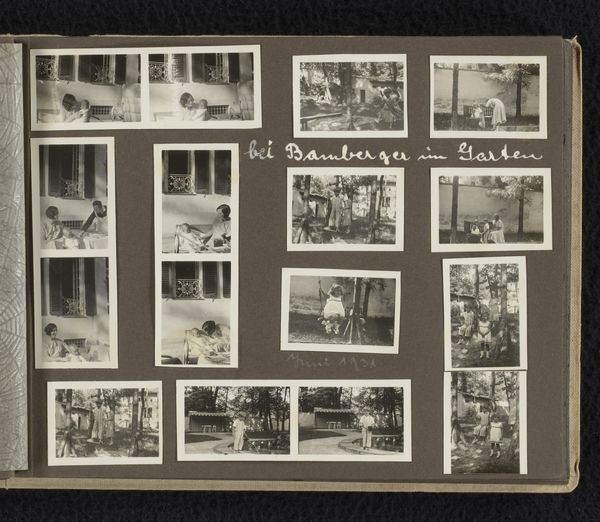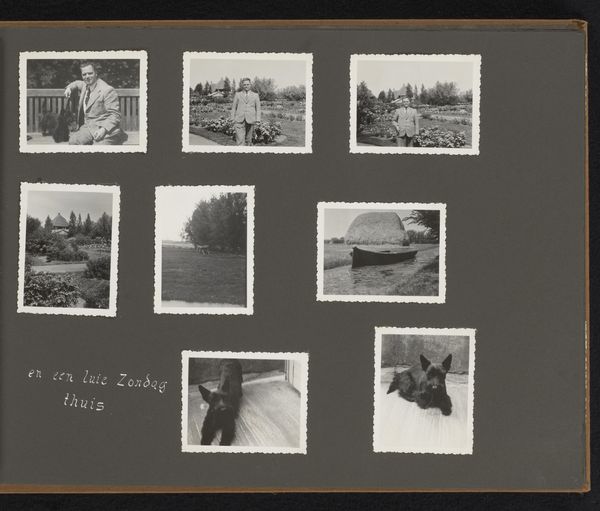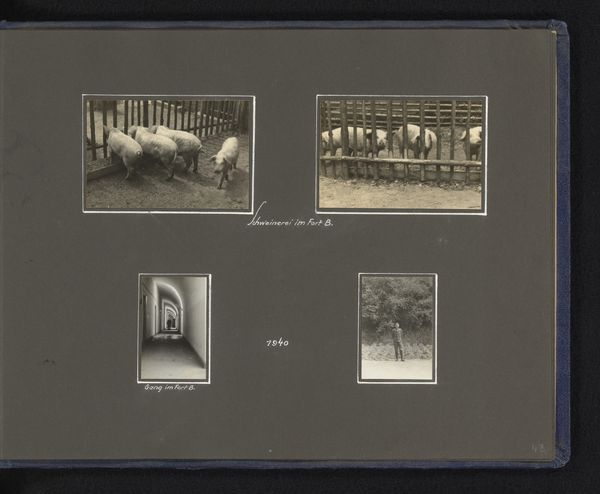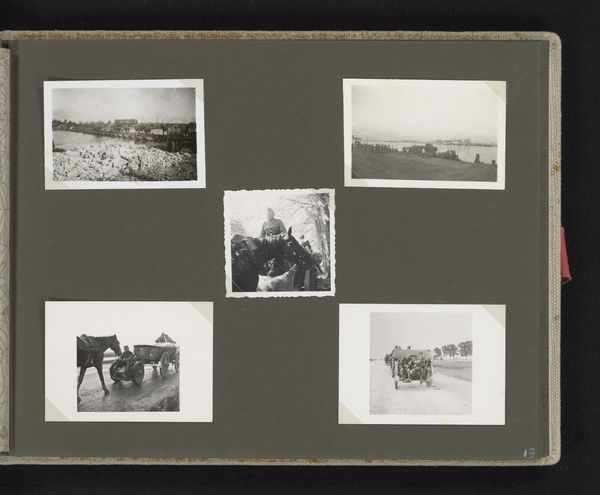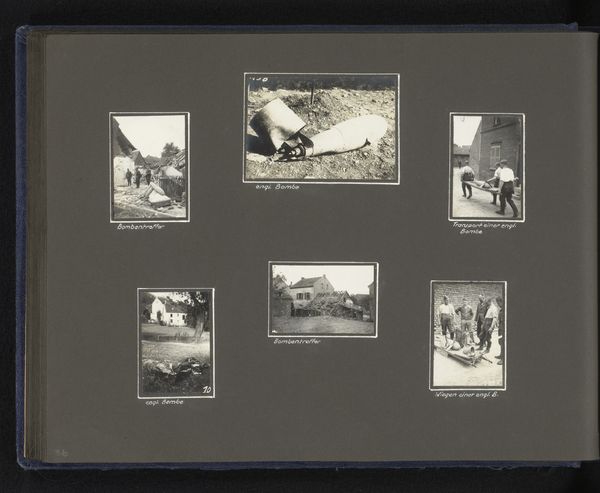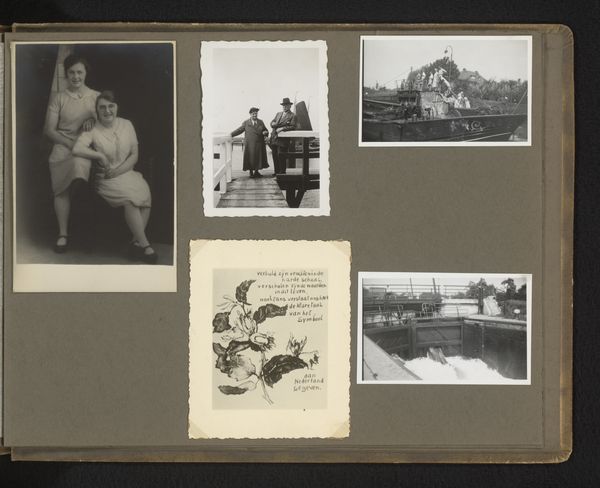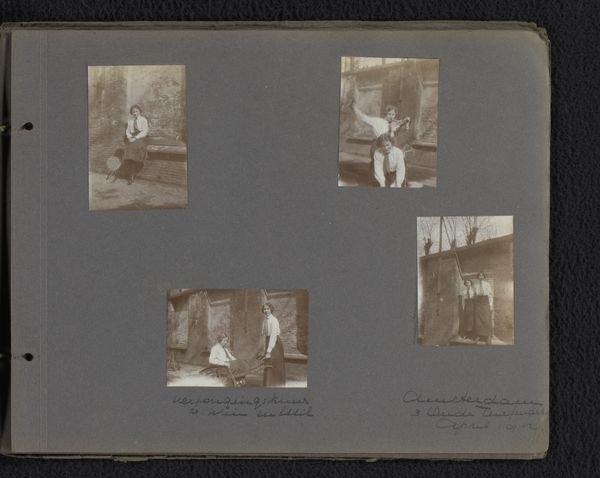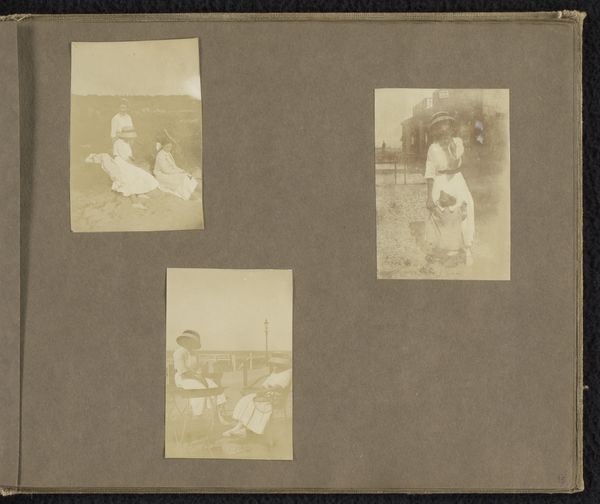
Groepsportret te Bloemendaal, twee interieurs en de hond Bessie Possibly 1939
0:00
0:00
print, photography, gelatin-silver-print
#
portrait
#
still-life-photography
# print
#
dog
#
landscape
#
street-photography
#
photography
#
gelatin-silver-print
#
ashcan-school
#
genre-painting
Dimensions: height 221 mm, width 320 mm
Copyright: Rijks Museum: Open Domain
Curator: At first glance, it reminds me of old family photo albums, with their carefully arranged snapshots offering glimpses into the past. Editor: Indeed. The artwork is entitled "Groepsportret te Bloemendaal, twee interieurs en de hond Bessie," likely from 1939, and is a gelatin silver print by Herman Besselaar. Curator: The varied images create a rather domestic tableau. We have a group portrait outdoors, a porch scene, an interior still life, and then a series of what appears to be portraits of a dog named Bessie. The way the photos are laid out has a real storytelling effect. Editor: Bessie does seem quite prominent, doesn’t she? The Ashcan School's influence, with its focus on capturing everyday life, feels present here. There’s an interesting juxtaposition of staged family moments with candid shots. One might question what the family dynamics are in that moment outside. The image is quite ordinary, and not exactly celebrating human connection in its conventional performance. Curator: The seemingly mundane is often rich with symbolic information. Consider the dog, Bessie. Dogs frequently represent loyalty and companionship. Here, the multiple images almost elevate Bessie to the status of a family member, a protector, and perhaps even a symbol of home itself. The photographs act as windows into this specific time. Editor: Yes, and knowing this was 1939 adds another layer. The looming Second World War. Those quiet, domestic scenes become weighted with a sense of fragility, of life continuing on the edge of unprecedented chaos. It shows a time where political uncertainty permeated ordinary family dynamics and visual signifiers, when family photo albums would be a potent tool to remember those moments. Curator: The light plays a subtle role as well. Soft and diffused indoors, starker in the outdoor scene. The contrasting light evokes different emotional registers—intimacy versus a kind of social formality. Editor: Thinking about photography's historical function—preserving memory, constructing identity—it makes you wonder about the choices Besselaar made, both in photographing and in assembling this page. What stories was he trying to tell, or perhaps, to safeguard? Curator: It gives a deeper resonance to these seemingly simple images. The personal archives transform into a window of lived reality, infused with unspoken historical tensions and feelings. Editor: Precisely. These are poignant echoes from the past that are, like all pictures, complex constructions rooted in social conditions. It forces you to consider how individual lives intersect with larger historical forces and perhaps reassess our definition of "historical."
Comments
No comments
Be the first to comment and join the conversation on the ultimate creative platform.
